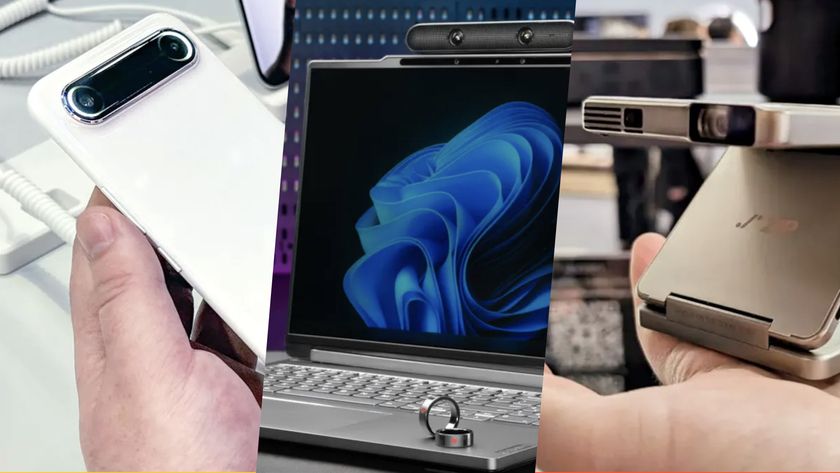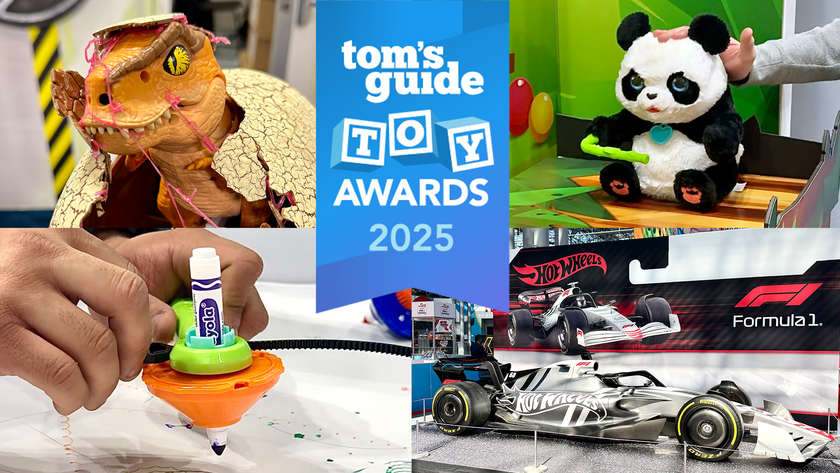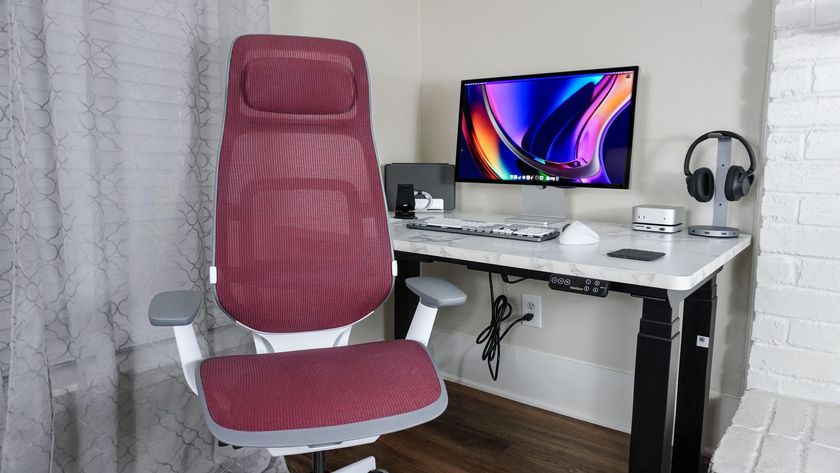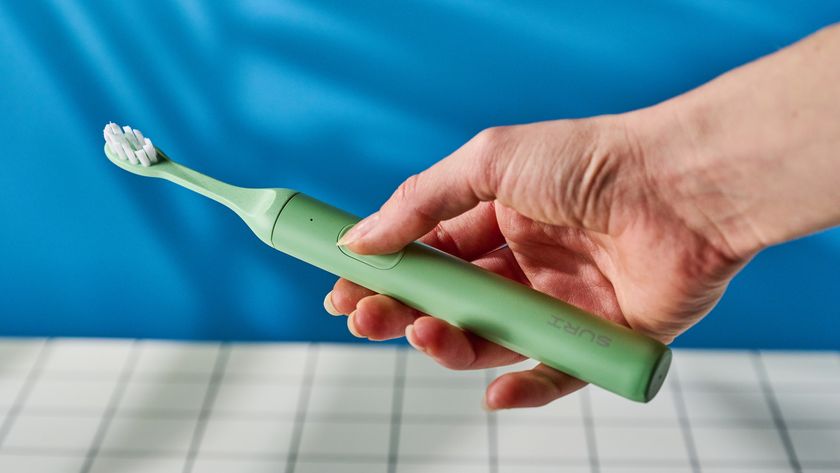3 Tech Concepts From CES 2014 You Might Actually Use
This article was originally published at The Conversation. The publication contributed the article to Tom's Guide's Expert Voices: Op-Ed & Insights. The massive Consumer Electronics Show (CES), hosted annually in Las Vegas, showcases the latest disc
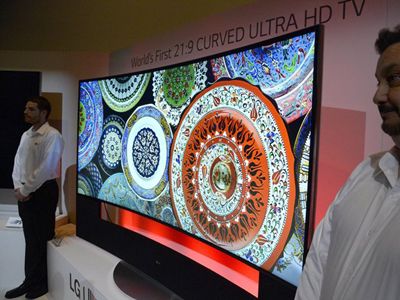
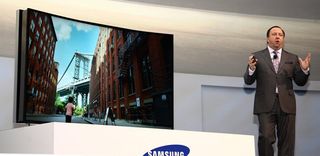
This article was originally published at The Conversation. The publication contributed the article to Tom's Guide's Expert Voices: Op-Ed & Insights.
The massive Consumer Electronics Show (CES), hosted annually in Las Vegas, showcases the latest discoveries and innovations, including audiovisual, gaming, smartphones, computing, household appliances and in-car technologies.
While we see plenty of new hardware, software and gadgets which definitely have the “wow!” factor (such as a Bluetooth-enabled toothbrush) as well as the odd celebrity low point, we should focus on the bits and pieces which could actually be useful – and potentially change our lives for the better.
So here are my top three most practical themes from CES 2014 which, in my opinion, could be easily incorporated into daily life.
Ultra high definition, curved, glasses-free 3D screens
Just as most people start to fully embrace the beauty of high definition contents, the Ultra HD (4K) screens already promise four times the resolution of existing 1080p full HD screens.
There is a strong push from leading companies such as Samsung and LG for technologies, such as organic light-emitting diodes (OLEDs), to deliver next generation screens that suit human vision better. Features of these screens include a curved, bendable design, richer color, more dynamic range of contrast and a more natural 3D depth vision without glasses.
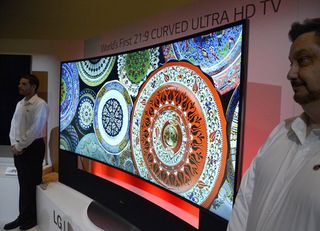
To help usher these screens into a new era of living room, new cameras and content providers (such as Netflix) will start the race to support the 4K resolutions. Next-gen gaming consoles such as PlayStation 4 are already 4K compliant.
The biggest question, though, is how would content be distributed? Blu-ray disc is no longer seen as a future-proof media to hold ultra HD audio visual contents.
(Perhaps the keynote by networking company Cisco later in the show will address streaming 4K contents over the internet, which means new services for renting and purchasing 4K videos.)
Refresh rate will continue to be a key requirement for comfortable viewing, especially for 3D viewing. High frame rate 3D has been used in some cinemas to show the latest blockbuster movie The Hobbit in 48 frames per second (rather than the usual 24 frames per second), which, according to director Peter Jackson, delivers a better 3D experience.
A higher frame rate also shows how future cinematic experience will feel closer to home theatre, but some reviews found the experience a little too real, like “watching a daytime TV show”.
Ultra realistic, near-lifelike visual experiences will continue to push technology, and future audio speakers, ranging from sound bars, headphones and multi-speaker systems will have to keep up by delivering equally high-definition audio contents.
Bluetooth 4.0 and AptX codecs are designed to deliver better quality audio over wireless.
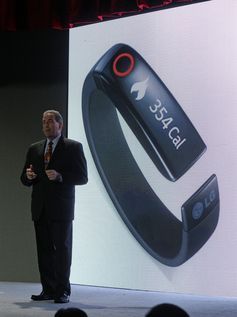
Wearable tech fashion from head to toe
An infographic by Mashable portrays how Google Glass, smart watches (or wristbands) and smartshoes can form fashionable technologies. When connected to smartphones, they will allow us to harness the power of embedded computers using natural interactions such as speech, gestures and action recorders.
These wearable gadgets have the capability to record our actions and activities to better understand our characteristics, profile and preferences to provide smarter services.
CES 2014 also unveils Netatmo’s sun tracking bracelet that helps users to track their UV exposure.
To support real-time monitoring and processing of information, many gadgets will leverage from the computing power of smartphones which are equipped with better processors, evidenced by the increasing push for 64-bit mobile processing units by Intel and NVidia.
In addition to these wearable gadgets, there is also Withing’s Aura Smart Sleeping System for analysing body activity and records information including noise, room temperature and light level to optimise a room’s lighting and sound that helps people get a good nights' rest.
Pervasive technologies that help with daily needs are attractive, but what’s overkill? For example, a Bluetooth-enabled toothbrush to help parents monitor children’s dental health is probably not going to be awfully useful.
Driverless cars – well, almost
Cars can already be connected to smartphones, enabling drivers to use speech to control features like GPS and streaming music. Apple’s voice-activated virtual assistant Siri helped revolutionise natural interaction and will soon work with new cars.
This year CES 2014’s keynotes feature Audi’s chairman Rupert Stadler. Audi will provide a large dedicated floorspace to showcase their future of driving, with driver assistance systems ranging from adaptive cruise control to lane-keeping assistance and automated steering, making cars nearly autonomous.
Manufacturers are committed to follow regulators in enabling gradual advances, as the key objective is to bring as many benefits as possible, such as helping to prevent road accidents, and more comfortable and safe driving experience.
Drivers remain in control, while built-in sensors, cameras and radars enable the car to take over much of the actual driving task.
What do these mean to us for now?
CES 2014 brings the emphasis to natural computing. It is now assumed that technology will become pervasive, wearable fashion and embedded in most of daily activities. People will embrace new gadgets that can help to make life easier, and bring imagination and creativity to reality.
Dian Tjondronegoro is a member of IEEE and ACM.
This article was originally published at The Conversation. Read the original article. The views expressed are those of the author and do not necessarily reflect the views of the publisher. This version of the article was originally published on Tom's Guide.
Sign up to get the BEST of Tom's Guide direct to your inbox.
Get instant access to breaking news, the hottest reviews, great deals and helpful tips.
Tom's Guide upgrades your life by helping you decide what products to buy, finding the best deals and showing you how to get the most out of them and solving problems as they arise. Tom's Guide is here to help you accomplish your goals, find great products without the hassle, get the best deals, discover things others don’t want you to know and save time when problems arise. Visit the About Tom's Guide page for more information and to find out how we test products.
-
quilciri curved televisions are almost useless. Unless you're right up on the screen there is no benefit. a curved monitor would have been a better prospect...Reply

